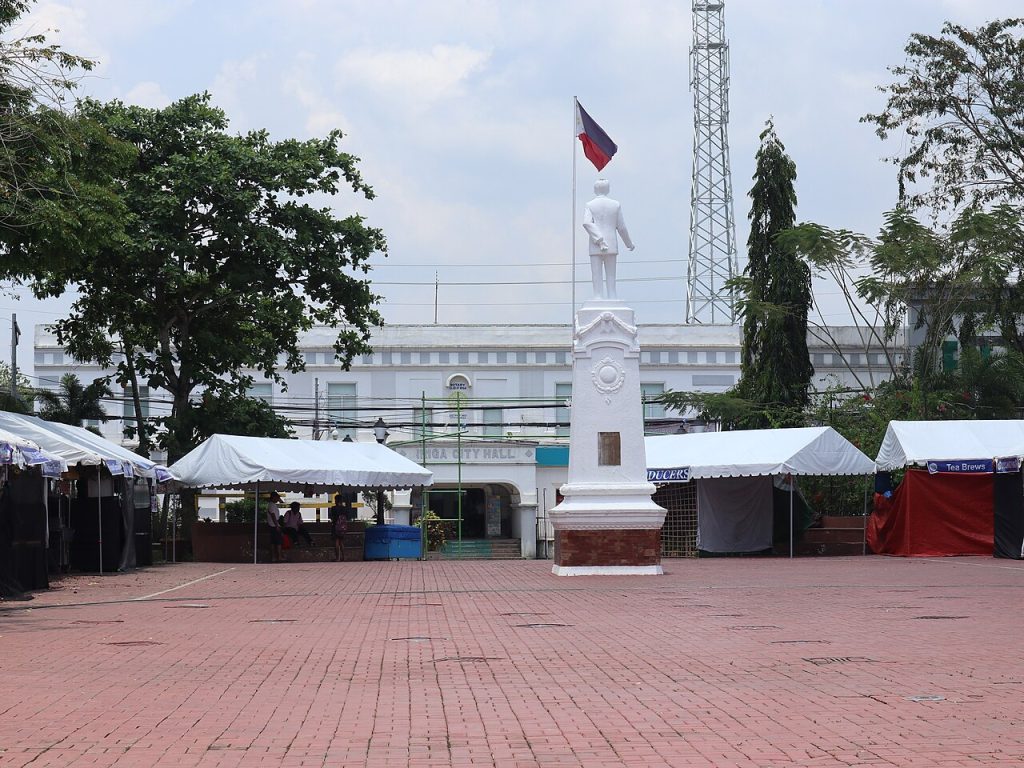
Iriga Plaza Rizal, Rizal Street, Iriga City, Camarines Sur by Patrickroque01
In the heart of the Bicol Region in southeastern Luzon, is the component city of Iriga. It is a vibrant blend of natural beauty, rich history, and cultural heritage. Located approximately 478 kilometers south of Manila, this city in Camarines Sur offers a unique experience for travelers seeking both adventure and immersion in Filipino traditions. This landlocked city has 36 barangays, a 2020 population of 144,457 people, and a land area of 137.35 sq. kilometers (53.03 sq. miles).
A City Born from the Earth
Iriga’s origins are deeply intertwined with the majestic Mount Iriga, also known as Mount Asog. This extinct volcano, standing at 1,212 meters, is not only a prominent landmark but also a symbol of the city’s resilience. The name “Iriga” is believed to have derived from “I-raga,” meaning “where there is land,” a term used by early settlers who moved to the area to escape flooding in nearby Nabua.
In 1641, a significant eruption of Mount Asog led to the formation of Lake Buhi. This serene lake, nestled between Mount Iriga and Mount Malinao, is renowned for being the habitat of the sinarapan (Mistichthys luzonensis), the world’s smallest commercially harvested fish.
by Living Essentials
From Visita to Vibrant City
Originally a visita (mission station) of Nabua in 1578, Iriga evolved over the centuries, achieving city status on September 3, 1968. Today, it comprises 36 barangays and boasts a population of over 114,000 residents.
The city’s economy is predominantly agricultural, with vast tracts of land dedicated to farming. Historically, Iriga was a major producer of abaca, a vital commodity in the Bicol region during the 19th and early 20th centuries.
Cultural and Historical Landmarks
- Saint Anthony of Padua Parish Church: Established in 1585, this Roman Catholic church has withstood the test of time, surviving fires and typhoons. Reconstructed in the 18th century, it stands today as a National Historical Landmark .Wikipedia
- Emerald Grotto of Our Lady of Lourdes: Perched atop Calvario Hill, this grotto offers panoramic views of the city and serves as a focal point during the annual Tinagba Festival.
- Inorogan Chapel: A quaint chapel located on the slopes of Mount Iriga, offering both spiritual solace and scenic vistas.
by Rainer Photo Episodes
Festivals and Traditions
Iriga’s cultural tapestry is rich and vibrant, with traditions passed down through generations. The Tinagba Festival, celebrated every February, is a thanksgiving event marking the start of the harvest season. Locals parade through the city with decorated carts filled with produce, showcasing their gratitude and community spirit.
To preserve and promote its intangible heritage, the city has established the Intangible Heritage Trust for Iriga City (IHT-IRC). This initiative focuses on documenting and revitalizing local traditions, languages, and performative expressions, ensuring they remain integral to Iriga’s identity.
Educational Hubs
Iriga is home to several esteemed educational institutions:
- University of Saint Anthony (USANT): Founded in 1947, USANT offers a range of programs and has been instrumental in shaping the city’s academic landscape.
- University of Northeastern Philippines (UNEP): Established in 1948, UNEP provides diverse courses and has a strong commitment to community development.
- La Consolacion College Iriga: A private Catholic institution founded in 1949, it emphasizes holistic education grounded in Christian values.
Natural Wonders and Outdoor Activities
Beyond its historical and cultural sites, Iriga offers numerous natural attractions:
- Lake Buhi: Ideal for boating and fishing, this lake is not only ecologically significant but also a source of livelihood for many locals.
- Mount Iriga: Adventurous souls can trek this dormant volcano, enjoying breathtaking views and exploring its diverse flora and fauna.
by Travel to Bicol
Weather Overview
Iriga experiences a tropical climate with two distinct seasons:
- Dry Season: January to May.
- Wet Season: June to December.
Given its location, the city is prone to occasional typhoons and heavy rainfall during the wet season.
Experience Iriga
Whether you’re a history enthusiast, nature lover, or cultural explorer, Iriga City offers a unique blend of experiences. Its rich heritage, combined with the warmth of its people, makes it a must-visit destination in the Philippines.
by PH Dot Net